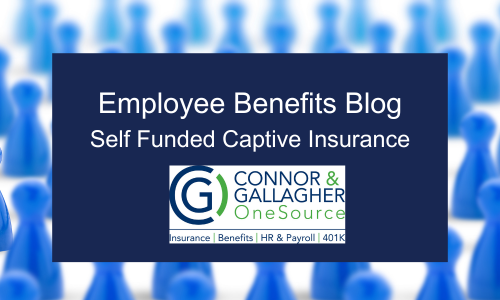Captives 101: A Smart Way to Manage Risk in Self-Funded Health Plans
If you're in HR or finance and managing a self-funded health plan—or thinking about it—you’ve probably heard the term, “captive”. They’re gaining serious traction, and in my opinion, for good reason.
So let’s break it down: what is a captive, and why should you care?
What’s a Captive in Simple Terms?
A captive is an insurance company that's owned by the employers it insures. When it comes to medical insurance plans, it’s simply another way to purchase stop loss coverage—which is key in a self-funded plan to protect employers against individual and aggregate catastrophic claims. The biggest difference from traditional stop loss is that you team up with other like-minded employers to spread the risk—and ideally, share in the rewards.
You’re still self-funded. You still have flexibility. But now you’re part of a group that has your back when large claims hit.
Why Captives Are Catching On
Here’s what makes captives worth exploring:
- Strength in Numbers
When you're in a captive, you're part of a larger risk pool. That means your high-cost claims don’t hit you as hard. For smaller to mid-size employers (say, 50 to 1,000 employees), this added protection can be the difference between a good year and a budget buster. - Potential to Get Money Back
This is one of my favorite parts. If the group performs well—meaning claims are better than expected—those unused funds can come back to you in the form of a dividend or lower renewal. Compare that to traditional insurance, where the carrier keeps any surplus as profit. - More Predictable Renewals
Captives tend to smooth out the highs and lows of year-over-year claims experience. In fact, most captives have additional provisions in their contract that some employers cannot get on a stand-alone basis. One of the most notable provisions caps increases at a set percentage and prohibits the stop loss carrier from “lasering” at renewal (a laser is when the stop loss carrier places a higher limit on an individual claim because they are a known risk). - Better Access to Data
Most captive structures give you better visibility into your claims data, which is crucial if you're serious about managing cost drivers like specialty drugs, chronic conditions, or steerage to high-value providers. Even further, I’ve found most captives provide you with access to a data warehouse with member-level detail. - Peer Collaboration
Captives are made up of forward-thinking employers. You’re not just sharing risk—you’re sharing ideas, resources, and sometimes even vendor relationships. There’s value in not having to reinvent the wheel alone. In my opinion, this is arguably the most beneficial reason to explore a captive.
Is a Captive Right for You?
Good candidates usually check a few boxes:
- Already self-funded or planning to make the leap
- Willing to invest in wellness, care navigation, or other cost-management strategies
- Looking for more predictability without giving up flexibility
- Already in a captive for Property & Casualty (P&C)
- Open to the idea of collaboration and shared governance
That last point is important. A captive isn't a hands-off solution. It works best when members engage and care about the long-term health of the group.
A Word of Caution
Captives aren’t magic. They still require thoughtful underwriting, strong partners (TPA, PBM, actuarial, etc.), and good plan management. And not all captives are built the same—some are more transparent and member-friendly than others. If you go this route, make sure you understand the governance, fee structure, and who’s really steering the ship.
Final Take
Captives are a promising strategy I’ve seen for mid-size employers trying to get more control over their health plan spend. Are they for everyone? No. But if you're tired of volatility, value transparency, and want to partner with other employers who are in it for the long haul, a captive could be a really smart move.
Author, Mike Kroupa
Questions? Contact us at info@GoCGO.com.

The views expressed by the authors on this website do not necessarily reflect the views of the website owners, operators, or any affiliated organizations. This blog is for educational and/or informational purposes only and does not constitute tax, financial, or legal advice.
While we’ve done our best to provide accurate and current information at the time of writing this blog, the information within this article is not guaranteed to be complete, correct, timely, current or up-to-date. Similar to any printed materials, the information may become out-of-date. The Authors undertakes no obligation to update any Information on the Site; provided, however, that the Authors may update the Information at any time without notice in the Authors’ sole and absolute discretion. The Authors reserve the right to make alterations or deletions to the Information at any time without notice.






